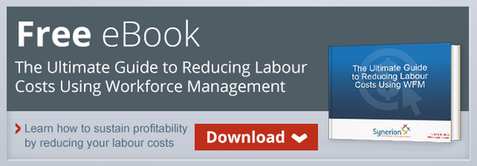 Managers know that overtime can eat into a company’s bottom line, but most businesses are so aggressively against overtime that myths regarding it abound. Here are six examples of myths about overtime that have developed over the years.
Managers know that overtime can eat into a company’s bottom line, but most businesses are so aggressively against overtime that myths regarding it abound. Here are six examples of myths about overtime that have developed over the years.
Myth 1: Overtime Needs to Be Authorized
Companies often fight against overtime by requiring managerial authorization for it. While that may be company policy, the federal government doesn’t care if employees asked for overtime or not. Companies still need to pay for each hour worked, even if that time wasn’t pre-approved. While overtime needs to be paid, employers can still reprimand employees up to and including job termination for not following company policy.
Myth 2: Overtime is Calculated Based on Pay Periods
If your payroll is done biweekly or monthly, that doesn’t give you extra time to settle overtime. Overtime is calculated based on the weekly hourly total. So if an employee works 35 hours during the first week of the pay period and 45 hours the second, the employee would receive 5 hours of overtime pay, regardless of how payroll was calculated.
Myth 3: If Meal Breaks are Interrupted, That’s Just Part of the Job
In some sectors such as healthcare and the service industry, there are a limited number of people staffed to perform a consistent job. Factor in sick employees or weekend staffing and many companies set up a situation where an employee is called back from a meal break to perform job duties. If employees are interrupted by work, they should receive pay during that half-hour break.
Myth 4: Rest Breaks are Required
Rest breaks are 15 to 20 minute paid periods given throughout the day. While highly encouraged, rest breaks are not always required, depending on the type of work and your local laws. During times of particularly high workloads, employees may be asked by employers to refrain from using their rest breaks.
Myth 5: Salaried Employees Aren’t Eligible for Overtime
Many employers use ‘salaried’ and ‘exempt’ status interchangeably but in reality, there’s a huge difference between the two. The Department of Labor allows employers to offer salaried compensation to non-exempt employees but those employees are eligible for overtime pay. Exempt employees may also be eligible for overtime pay under very specific circumstances, like performing a job outside of their normal job duties. It’s best to check with your local labour office or state agency before making a blanket statement about salaried employees and overtime.
Myth 6: Travel Time Doesn’t Count Towards Overtime
Travel may be part of an employee’s job, but that doesn’t mean it exempts you from paying overtime for some of that travel. For exempt employees, employers are not obligated to pay overtime for their travel, but if you have non-exempt employees traveling during non-traditional work hours, they should be receiving overtime pay. For example, if an employee who typically works Monday through Friday needs to fly to a conference on Saturday, those hours spent traveling would count towards their weekly hours. If the conference was conducted during normal work hours and they traveled back the following Saturday, all travel hours would be considered overtime.
Many of these myths are easily avoidable, but falling prey to them can cost employers time and money. As with any law, it’s important to understand both national and state regulations before causing an accidental violation. Regardless, having a relationship with any local labor agencies and a workforce management system that can alert you to when these myths are being perpetuated is essential.
